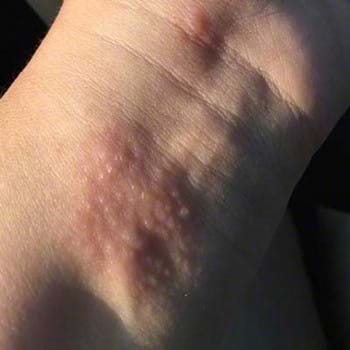Outdoor Itch Resource Center
Welcome to the outdoor itch resource center! Our goal is to help you stay itch and pain-free. We offer guides and how-to's to help you understand and avoid poison ivy and oak.
- Common Misconceptions About Treating Poison Ivy Rash
- How Does Poison Ivy Spread?
- How Does Poison Ivy Work?
- How old is my Tecnu
- How To Get Rid of Poison Ivy
- How to Identify Poison Ivy
- How to Identify Poison Oak
- How to Identify Poison Sumac
- How to Use Tecnu Original Outdoor Skin Cleanser on Pets, Clothing, Tools, Equipment and More
- Tecnu Original versus Tecnu Extreme
- Unexpected Sources of Poison Ivy or Oak Rash
- What is Contact Dermatitis?
- Where Do I Find Poison Ivy, Oak, and Sumac Plants?
- Which Tecnu Do I Use?
- Am I Immune To Poison Ivy?
- Are Dead Poison Ivy Plants Safe To Touch?
- Can I Get A Rash From Burning Poison Ivy?
- Can I Get Poison Ivy From My Dog?
- Can I Get Poison Ivy Rash From Someone Else?
- Do Blisters Cause Poison Ivy Rash To Spread?
- Does Bleach Help Poison Ivy Rash?
- How Do I Stop Itching From Poison Ivy And Oak?
- How Do You Cure Poison Ivy Fast?
- How Long Will Poison Ivy Rash Last?
- Should I Break The Blisters From Poison Ivy Rash?
- Should I Clean Poison Ivy From Clothing And Tools?
- Should I Wrap Or Cover Poison Ivy Rash?
- What Causes Poison Ivy Rash?
- What Does A Poison Ivy Rash Look Like?
- How to use Calagel
- How to use Tecnu Extreme
- How to use Tecnu Original
- How to use Tecnu Original Cleanser to Remove Poison Ivy and Oak Oil from Your Clothing
- How to use Tecnu Original Cleanser to Remove Poison Ivy and Oak Oil from Your Pet’s Fur
- How to use Tecnu Original Cleanser to Remove Poison Ivy and Oak Oil from your Skin
- How to use Tecnu Original Cleanser to Remove Poison Ivy and Oak Oil from your Tools
- How to use Tecnu Original Cleanser to Remove Skunk Oil from Your Pet's Fur
Do Blisters Cause Poison Ivy Rash To Spread?

No, the poison ivy blisters are the caused by the body's natural allergic reaction to the plants. If the blisters break and ooze, the fluid does not contain the oil that causes spreading.
The rash-causing oil, called urushiol, from the original contact with poison oak and poison ivy will continue spreading (unless removed) for the first one or two days. It is found in all parts of poison ivy, oak and sumac plants whether dead, dormant or thriving.
If new areas of rash appear after three days, and you have not been in contact with the plants, you are most likely getting re-exposed to the oil from contaminated clothing, tools, or even your cat or dog.
Updated on 12 Feb 2025
- Choosing a selection results in a full page refresh.
- Opens in a new window.
